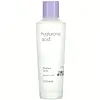What's inside
What's inside
 Key Ingredients
Key Ingredients

 Benefits
Benefits

 Concerns
Concerns

 Ingredients Side-by-side
Ingredients Side-by-side

Water
Skin ConditioningButylene Glycol
HumectantHydroxyethyl Acrylate/Sodium Acryloyldimethyl Taurate Copolymer
Emulsion StabilisingTrehalose
HumectantPEG-40 Hydrogenated Castor Oil
EmulsifyingPPG-26-Buteth-26
Skin ConditioningEthylhexylglycerin
Skin ConditioningCaprylyl Glycol
EmollientParfum
MaskingPortulaca Oleracea Extract
Skin ConditioningPhenoxyethanol
PreservativeMalpighia Emarginata Fruit Extract
Skin ConditioningSodium Hyaluronate
HumectantDisodium EDTA
Vaccinium Angustifolium Fruit Extract
Skin ProtectingLinalool
PerfumingTromethamine
BufferingButylphenyl Methylpropional
PerfumingCitronellol
PerfumingHexyl Cinnamal
PerfumingHibiscus Sabdariffa Flower Extract
Skin ConditioningWater, Butylene Glycol, Hydroxyethyl Acrylate/Sodium Acryloyldimethyl Taurate Copolymer, Trehalose, PEG-40 Hydrogenated Castor Oil, PPG-26-Buteth-26, Ethylhexylglycerin, Caprylyl Glycol, Parfum, Portulaca Oleracea Extract, Phenoxyethanol, Malpighia Emarginata Fruit Extract, Sodium Hyaluronate, Disodium EDTA, Vaccinium Angustifolium Fruit Extract, Linalool, Tromethamine, Butylphenyl Methylpropional, Citronellol, Hexyl Cinnamal, Hibiscus Sabdariffa Flower Extract
Milk Protein Extract
Glycerin
HumectantPEG-60 Hydrogenated Castor Oil
EmulsifyingPhenoxyethanol
PreservativeStyrene/Vp Copolymer
Ethylhexylglycerin
Skin ConditioningHydroxyethylcellulose
Emulsion StabilisingDisodium EDTA
Parfum
MaskingWater
Skin ConditioningNelumbo Nucifera Extract
Skin ConditioningSophora Japonica Flower Extract
Skin ProtectingFreesia Refracta Extract
Skin ConditioningLilium Tigrinum Flower/Leaf/Stem Extract
Skin ConditioningLeontopodium Alpinum Extract
Skin ConditioningHouttuynia Cordata Extract
Skin ConditioningSaussurea Involucrata Extract
HumectantChrysanthemum Zawadskii Extract
Skin ConditioningBellis Perennis Flower Extract
Skin ConditioningAllantoin
Skin ConditioningBenzyl Benzoate
AntimicrobialHexyl Cinnamal
PerfumingQuillaja Saponaria Bark Extract
CleansingCaprylyl Glycol
EmollientBeta-Glucan
Skin ConditioningCaulerpa Lentillifera Extract
Solanum Lycopersicum Fruit Extract
AntioxidantCitrullus Lanatus Fruit Extract
Skin ConditioningCarica Papaya Fruit Extract
Skin ConditioningCitrus Paradisi Fruit Extract
Skin ConditioningCitrus Aurantium Dulcis Fruit Extract
MaskingPrunus Armeniaca Fruit Extract
Skin ConditioningMilk Protein Extract, Glycerin, PEG-60 Hydrogenated Castor Oil, Phenoxyethanol, Styrene/Vp Copolymer, Ethylhexylglycerin, Hydroxyethylcellulose, Disodium EDTA, Parfum, Water, Nelumbo Nucifera Extract, Sophora Japonica Flower Extract, Freesia Refracta Extract, Lilium Tigrinum Flower/Leaf/Stem Extract, Leontopodium Alpinum Extract, Houttuynia Cordata Extract, Saussurea Involucrata Extract, Chrysanthemum Zawadskii Extract, Bellis Perennis Flower Extract, Allantoin, Benzyl Benzoate, Hexyl Cinnamal, Quillaja Saponaria Bark Extract, Caprylyl Glycol, Beta-Glucan, Caulerpa Lentillifera Extract, Solanum Lycopersicum Fruit Extract, Citrullus Lanatus Fruit Extract, Carica Papaya Fruit Extract, Citrus Paradisi Fruit Extract, Citrus Aurantium Dulcis Fruit Extract, Prunus Armeniaca Fruit Extract
 Reviews
Reviews

Ingredients Explained
These ingredients are found in both products.
Ingredients higher up in an ingredient list are typically present in a larger amount.
Caprylyl Glycol is a humectant and emollient, meaning it attracts and preserves moisture.
It is a common ingredient in many products, especially those designed to hydrate skin. The primary benefits are retaining moisture, skin softening, and promoting a healthy skin barrier.
Though Caprylyl Glycol is an alcohol derived from fatty acids, it is not the kind that can dry out skin.
This ingredient is also used as a preservative to extend the life of products. It has slight antimicrobial properties.
Learn more about Caprylyl GlycolDisodium EDTA plays a role in making products more stable by aiding other preservatives.
It is a chelating agent, meaning it neutralizes metal ions that may be found in a product.
Disodium EDTA is a salt of edetic acid and is found to be safe in cosmetic ingredients.
Learn more about Disodium EDTAEthylhexylglycerin (we can't pronounce this either) is commonly used as a preservative and skin softener. It is derived from glyceryl.
You might see Ethylhexylglycerin often paired with other preservatives such as phenoxyethanol. Ethylhexylglycerin has been found to increase the effectiveness of these other preservatives.
Hexyl Cinnamal is a fragrance ingredient with a similar scent to jasmine. It can be naturally found in chamomile essential oil.
This ingredient is a known EU allergen and may sensitize the skin. The EU requires this ingredient to be listed separately on an ingredients list.
Hexyl Cinnamal is not water soluble but is soluble in oils.
Learn more about Hexyl CinnamalParfum is a catch-all term for an ingredient or more that is used to give a scent to products.
Also called "fragrance", this ingredient can be a blend of hundreds of chemicals or plant oils. This means every product with "fragrance" or "parfum" in the ingredients list is a different mixture.
For instance, Habanolide is a proprietary trade name for a specific aroma chemical. When used as a fragrance ingredient in cosmetics, most aroma chemicals fall under the broad labeling category of “FRAGRANCE” or “PARFUM” according to EU and US regulations.
The term 'parfum' or 'fragrance' is not regulated in many countries. In many cases, it is up to the brand to define this term.
For instance, many brands choose to label themselves as "fragrance-free" because they are not using synthetic fragrances. However, their products may still contain ingredients such as essential oils that are considered a fragrance by INCI standards.
One example is Calendula flower extract. Calendula is an essential oil that still imparts a scent or 'fragrance'.
Depending on the blend, the ingredients in the mixture can cause allergies and sensitivities on the skin. Some ingredients that are known EU allergens include linalool and citronellol.
Parfum can also be used to mask or cover an unpleasant scent.
The bottom line is: not all fragrances/parfum/ingredients are created equally. If you are worried about fragrances, we recommend taking a closer look at an ingredient. And of course, we always recommend speaking with a professional.
Learn more about ParfumPhenoxyethanol is a preservative that has germicide, antimicrobial, and aromatic properties. Studies show that phenoxyethanol can prevent microbial growth. By itself, it has a scent that is similar to that of a rose.
It's often used in formulations along with Caprylyl Glycol to preserve the shelf life of products.
Water. It's the most common cosmetic ingredient of all. You'll usually see it at the top of ingredient lists, meaning that it makes up the largest part of the product.
So why is it so popular? Water most often acts as a solvent - this means that it helps dissolve other ingredients into the formulation.
You'll also recognize water as that liquid we all need to stay alive. If you see this, drink a glass of water. Stay hydrated!
Learn more about Water